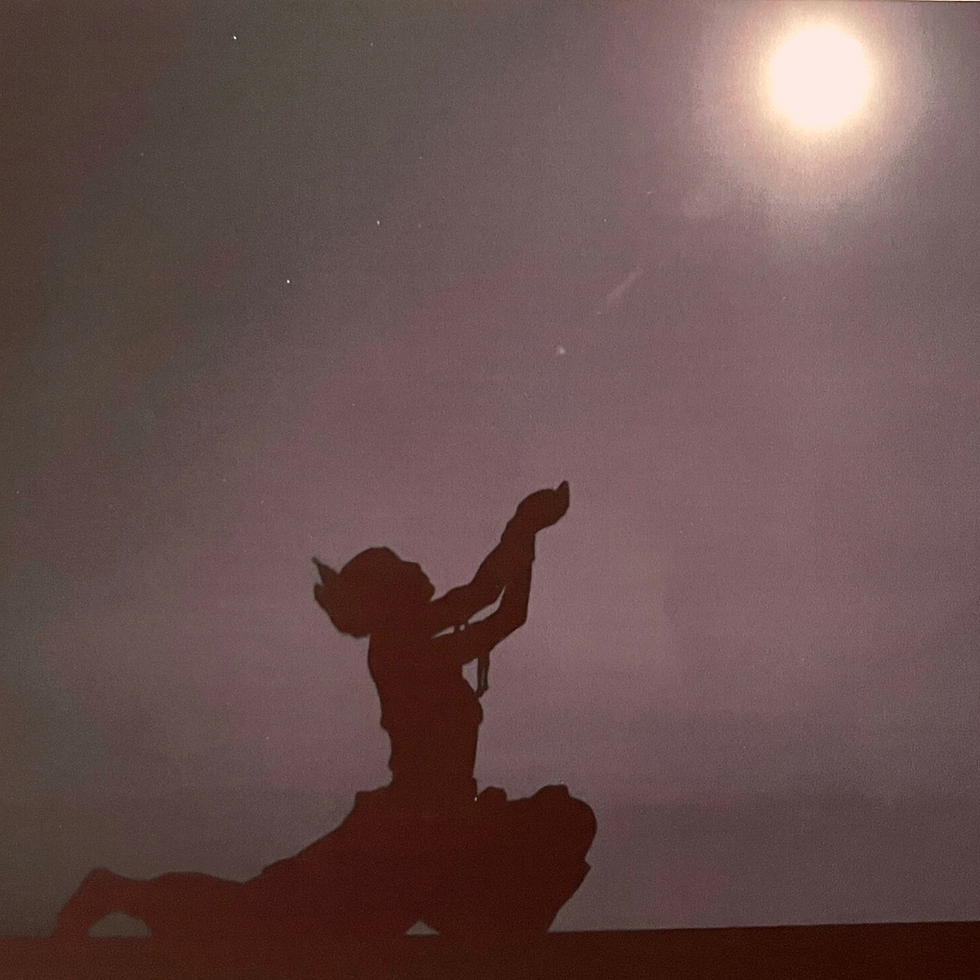Indian temple dance
- i58062
- Oct 12, 2022
- 4 min read
Written by Valentina Leo in 2005

The primary field of Tantra is that the Ultimate Reality is the Higher Self of each individual , symbolically represented by the Divinity. Even if the individual is not able to understand this, ritual has the power to transform the mind from ignorance into an understanding of its own true nature.
In Tantric India, temple dancers or Devadasis (literally "servants of God" ) were integral part in the temple rituals of worship. Dance was regarded as an essential accompaniment to the worshipping rituals performed in the temple and a mean by which Gods and Goddesses could be entertained and their divine essence embodied. In the Shakta tradition the devadasis assumed the role of Devi (Primordial Goddess - female principle) and the dance represented the physical consummation of her union with Siva (primordial God - male principle).
Among the 5 elements that make up our perceivable reality (earth, fire, air, water and ether) the dancer does certainly represent Earth, and earthly pleasures.
To witness a Devadasi dancing in the temple was to receive Darshan - "to be looked upon" by the very deity. The devadasis were speaking a language of mystic hand gestures and yogic body postures, imbuing the activity of dancing with a distinct 'consciousness transforming' value for the performer and the observer.
..She danced in absolute silence for about half an hour to the simple but exciting rhythm of a small pakhwaj (small drum) played by an elderly man, perhaps her Guru. The whole performance was a real piece of aesthetic dedication to the Lord and supremely beauteous...and after the dance was over, this writer was amazed to witness many devotees, young and old, men and women, rolling over the very ground that the young devadasi had danced on..
The saga of Lord Jagannath by Dr. M. Mansinha

Geometrical diagrams or yantras are also integral to Tantric ritual. A central perception in Tantric belief is that divine form can be 'harnessed' by geometrical order. The human body - the manifested energy or Shakti, is seen as a compendium of 64 Yoginis (deities) located in specific parts of the body and linked to each other by subtle channels of energy forming geometric body- yantra. Visualizing this yantra trough meditation will create an internal unity of yogic forces resulting in Bliss and Enlightenment. The union of Shakti with Lord Shiva, the unmanifested energy.
At times, the devadasis were also performing dance rituals that were not meant for an audience. She, the musician and the Brahmin alone would perform them within the private spaces of the temples. Because the temple itself was nothing less but a Cosmic Yantra, representing the body of the Higher Self, It was built following very precise geometrical and spatial rules. As the human body is comprise of 64 Yoginis sitting in different places so the temple had specific divinity living in different locations. One of the duty of the sacred dancer was to connect and unify those point of forces. As the dancer awakes her Kundalini in her body trough her dancing, so the dance would enhanced and empower the temple compounds awakening its sleeping energies and making it the perfect ground for ceremonies and rituals of worships.
Everybody, whether householder or sanyasin, must remember that the awakening of Kundalini is the prime purpose of human incarnation. All the pleasure of sensual life which we are enjoining now are intended only to enhance the awakening of Kundalini amidst the adverse circumstances of human life.
Kundalini Tantra by Swami Satyananda Sarasvati
Triangular shapes and the element of Fire can be seen and felt mainly in the legs bending at the knee. The element Air and the shape of a circle is to be seen in the circular movements of the torso originating at the heart chakra. Circles are also drawn by the arms and the feet on the floor.
The element Water and the crescent moon are embodied by the gentle arching of the arms and the opening of the heart region in the chest, generating the feeling of offering of the self.
The bindu or dot and the quality of Ether are represented in the sharp and precise movements of the eyes.
In this frame dance can be seen and felt as the creation of a virtual yantra divisible into squares, triangles, circles, crescent moons and dots... forming meditative fields within which the dancer dances. Breath is the physical substance that traverse the barrier between the yantra within and the one in which the dancer is contained . It dissolves the boundaries of space between the outside and the inside creating the perfect ground for achieving dissolution of self consciousness. In this space the movements are no longer 'ours' in a personal way, we can observe the realm of silence just behind them, empty of Ego and full of God. In this space the dancer can experience the state of "Cosmic Bliss" that have always been the purpose of ritual dance.
The stillness in stillness is not the real stillness. Only when there is stillness in movement can the spiritual rhythm appear which pervades heaven and earth.
TS'AI-KEN T'AN
Photo credit: MrsLove (Valentina Leo)


Comments